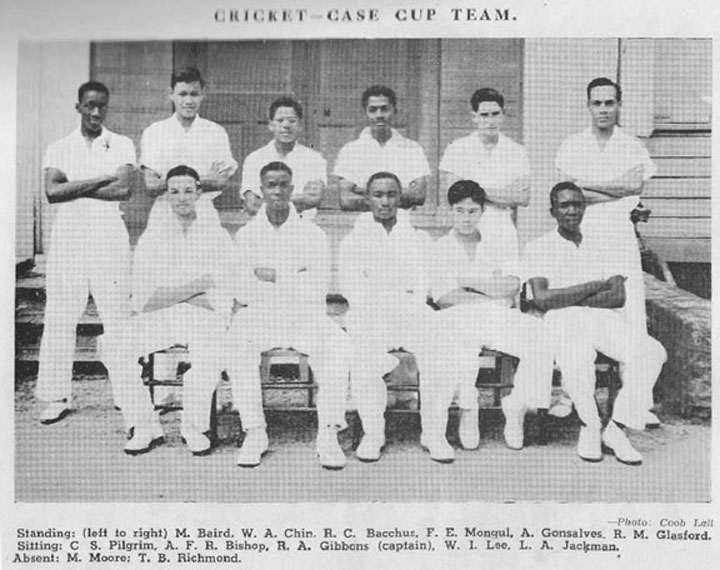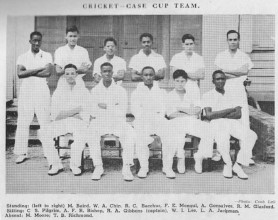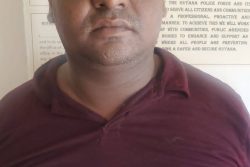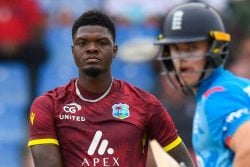Dear Editor,
The headlines on page 22 of SN of October 1, 2010, caught my eye, if only in answer to a question with which I have been wrestling for some time now.
At first, as an out-of-touch senior citizen, I was bemused by the opening sentence of the piece which read, “St Stanislaus College Secondary,” leaving me immediately to wonder whether my old school was also “Queen’s College Secondary.” The imputation seemed to be that the word ‘College’ was just a name, like say, ‘Ruimveldt,’ and did not intrinsically reflect the status of the educational institution. But times obviously have moved far past such quibbles.
My substantive interest in the article was that an Inter-House track competition was successfully run off at the GCC Ground, Bourda, bringing back fond memories of similar annual Queen’s College competitions at the same Bourda Ground. Saints of course had their day. Both events were, in our time (sixty and more years ago), significant sporting and social events in Georgetown.
These competitions produced outstanding athletes who went on to represent the country at international championships. (It should be stressed that in between five year intervals of Test cricket, athletics and cycle sports were the hardy international events on Easter and August holiday weekends.)
While I have been reminded of famous predecessors like Lovell, Jupiter, Bannister, Hercules and Bascom, contemporary names like Marks, Bacchus, Mongul, Klautky also resonate through the annals of Queen’s; while for Saints, our regular competitors included, to name a very few, Hazelwood, Corsbie, Glasgow (also a national goalie), preceded by Crane and Trim, who became attorneys-at-law.
Such national representation was replicated in cricket, football, as well as hockey, all of which appear to enjoy little priority on the current developmental agenda of these two institutions; and in the case of hockey, of the agenda of counterpart Bishops’ High School. But then we were just boys (Queens and Saints) and girls (BHS) schools. Perhaps, too idly, one ponders the impact of integration on the apparent disaggregation of scholarship from sports, and the limited production of high-level national contenders from these institutions.
At least, the evidence at once hallowed Queen’s playing fields at Thomas Lands, is hardly encouraging. Passing by during the recent August school vacation, I recalled wistfully white-clad youngsters, of varying sizes and ages, ‘chasing ball’ in at least three cricket matches at a time, sometimes self-organised.
Not so August 2010. There was just too much bush that would have defied weeding by even the most exuberant athletes of the past.
This was the ground on which Queen’s played in the first class and second class cricket competitions of the day, against teams of mature (and aging) players of the Georgetown Cricket Club, Police Sports Club, the Malteenoes Sports Club, amongst others; and went on to produce, within that space of time, national cricketers like Bruce Pairaudeau, Arnold Gibbons, Leroy Jackman, Aubrey Bishop. Except for Bruce, who migrated to New Zealand after playing Test cricket, the others will be recognised for becoming highly qualified professionals: respectively, university professor, attorney-at-law, and chancellor of the judiciary. They all emerged from the same team that included the late Dr Walter Chin; Wallace ‘Bud’ Lee, Surgeon; Dr Frank Mongul, veterinarian; Dr Mauldie Baird, the late Michael Glasford, chemist, who became a director of Bookers, UK; and Cecil Pilgrim, who like ‘Rudy’ Collins (champion high jumper), ambassador in Guyana’s foreign service.
Two other names who will more likely be better remembered are Dr Rupert Roopnaraine, who was a Cambridge blue and captained the university cricket team. Of more recent vintage was the Test all-rounder Roger Harper who became a vice-captain of the West Indies team.
Drs Mohan Ragbeer and Maurice Luckhoo played mostly for the second team along with Maurice Moore who qualified as an accountant, and who became national captain of both the football and table-tennis teams. Neville Thomas, Brian Patoir and the Wight brothers emerged from ‘Saints’ onto the national stage, with brother Leslie making one test appearance.
Similar combinations of scholarship and ‘physical’ prowess were replicated at the level of national football and hockey.
QC masters and students at the time all took seriously the school song Mens sana in corpore sanum – a truism that must have fallen out of currency in the absence of the subject Latin. My contemporaries nostalgically recall some of the assigned games masters – Niles, Drayton (both of Science); while others played in one or other of the competition teams: Richmond – 1st division, Yansen and Principal Sanger-Davies – 2nd division.
Fred Wills, arguably the most brilliant student of his generation, and a British Guiana Government scholar, devoted much energy in mobilising and developing cricketing talent in the school.
I realise that this recital may appear longwinded and indeed self-serving. But however falteringly, it is striving to counter the implication currently in practice that sports should be disaggregated from scholarship, and therefore must end up being placed in the relegation zone.
It is an appeal to the indifference towards providing the opportunity for young men and women to discover more of themselves, through exploring and developing latent talents.
It is contrasting the Guyana practice with that of our neighbour Jamaica, who over the years has developed, for example, world athletic prowess through a well-coordinated programme of attachments and entry into those many North American universities who understand the contribution sports can make to the development of character, which importantly, in our local integrated dispensation, would be open to the critical examination of our female counterparts.
It is a response to the myopic parent who asserts “I don’t send my child to school to play games.”
It is perhaps a final salute to the men named in the accompanying photograph of 1949 – 50.
Those of us who have been fortunate to be able to look back on those halcyon years, will have to be pardoned for observing how relatively uni-dimensional personalities are being produced out of the current ‘progressive’ education system, as our successors for leadership.
These non-players have missed the opportunity to experience what team-manship is all about; how natural it becomes to observe the rules; and to take the umpire’s/referee’s decisions (now reinforced by electronic aids); and more profoundly, how to lose.
And in the final and, perhaps, most critical analysis, how not being a team player denies the opportunity of bonding across the racial/social/religious divides – a bane of our society.
Look at the example of cross-cultural relationships set by the teams participating in the recently held IPL/Airtel T20 Championships!
Yours faithfully,
E B John






